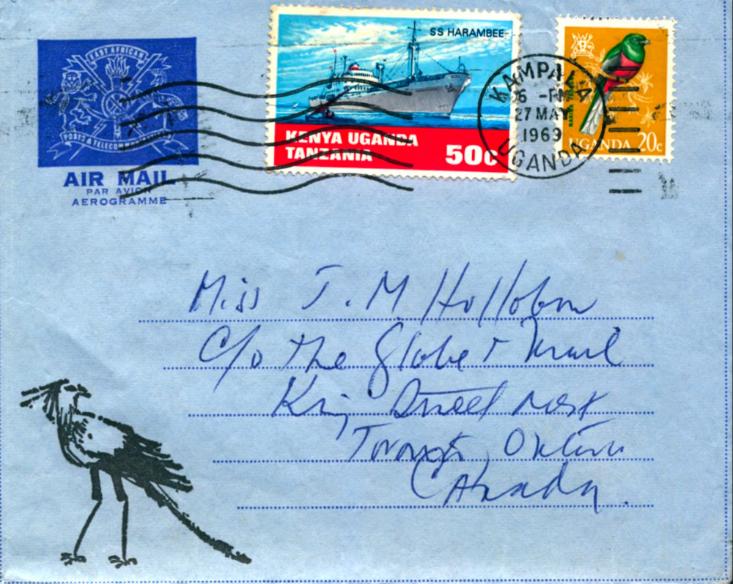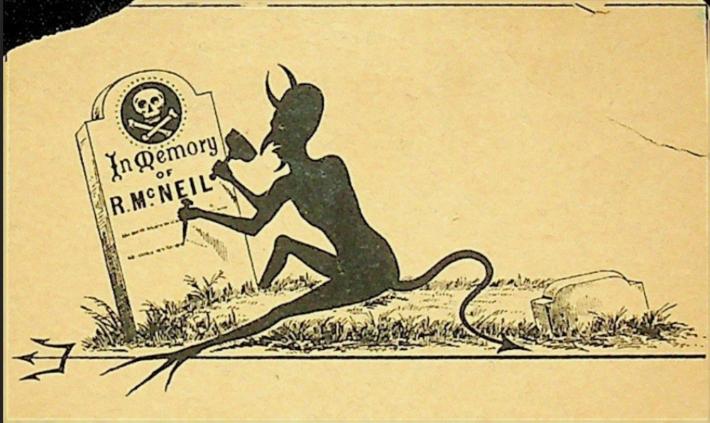Introducing...
Joan Hollobon Correspondence
 The Joan Hollobon Correspondence adds a bit of a human touch to the Teachers for East Africa and Teacher Education in East Africa Collection. While the latter collection focuses heavily on the administrative, procedural, and personnel aspects of the remarkable program began early in the Kennedy administration as a proto-type for the Peace Corps, the former provides researchers with a glimpse into the personal experience of one of the participants.
The Joan Hollobon Correspondence adds a bit of a human touch to the Teachers for East Africa and Teacher Education in East Africa Collection. While the latter collection focuses heavily on the administrative, procedural, and personnel aspects of the remarkable program began early in the Kennedy administration as a proto-type for the Peace Corps, the former provides researchers with a glimpse into the personal experience of one of the participants.
The 64 letters, written to Joan Hollobon between 1965 and 1969 (with the bulk being between 1967 to 1969) detail Catherine “Fair” Scott Rose’s experience as an administrator for Teacher Education in East Africa located in Kampala, Uganda. The correspondence, which comprise this collection, are largely personal and discuss the TEEA program, Rose’s daily life in Kampala, and her perspectives on contemporary events in the U.S as viewed from abroad.
The titles for each letter were derived key words or phrases contained within the introductory sentence during accession by staff in the Special and Digital Collections unit.
The general inventory is as follows:
1965
- One letter, typewritten, discusses trip to Queen Elizabeth Park, Kabale
1966
- One letter, typewritten, discusses the arrival of the new class of ‘Tutors,’ Uganda Education Association Conference, and Hollobon’s upcoming visit to Rose.
1967
- Sixteen letters from June to December, all handwritten except for two (dated November 3rd and August 11th). The August 11th letter is also one of a handful of letters in the collection not written by Rose; in this case Hollobon wrote to request a receipt for insurance on Rose’s behalf. Topics in the correspondence include Rose’s dietary changes and travel plans in Africa and Europe, as well as her attempts to master the French language.
1968
- Twenty-five letters from January to October, all handwritten.
1969
- Nineteen letters, two typed, and one air-mail envelope
Teachers College Book Plate Collection
“Bookplates originated in Germany soon after the first printed book appeared and were then, as now, used to express gratitude for a gift or to assert ownership.
Bookplates have always been an art form. Famous engravers and designers have been attracted to them by reason of special opportunities and problems they presented notable artists who practiced the bookplate art include Albrecht Dürer, Hans Holbein, Hogarth, William Blake, Aubrey Beardsley, Paul Revere, and Rockwell Kent.
The History of the bookplate mirrors the fashions in heraldic practices, furniture architecture and design of the periods in which they were produced. They also stand as a record of printing methods. The earlies ones were woodcuts and copper engravings; later ones included examples of etching, steel, zinc, lithographic, photoengraving processes and other.”
-A note found in the Special Collections’ regarding Book Plates
 The Teachers College Book Plate Collection consists of over 500 individual book plates marking both individual and institutional contributions. There is little in the way of decisive documentation on the acquirement of many of these plates, but through a series of documents we can infer that the bookplates came to us either through the tradition of plate exchanges, via gifting of collections, and via Gottesman Library itself (and other institutional names for the library, including Milbank Library, Bryson Library, and Teachers College Library) as a method of documentation.
The Teachers College Book Plate Collection consists of over 500 individual book plates marking both individual and institutional contributions. There is little in the way of decisive documentation on the acquirement of many of these plates, but through a series of documents we can infer that the bookplates came to us either through the tradition of plate exchanges, via gifting of collections, and via Gottesman Library itself (and other institutional names for the library, including Milbank Library, Bryson Library, and Teachers College Library) as a method of documentation.
While, the practice of trading and acquiring bookplates, as a commonplace policy at Teachers College Library, had ceased by 1941, we continue to feature the plates prominently in Teachers College Digital Collection as decorative tiles for our numerous collections.


